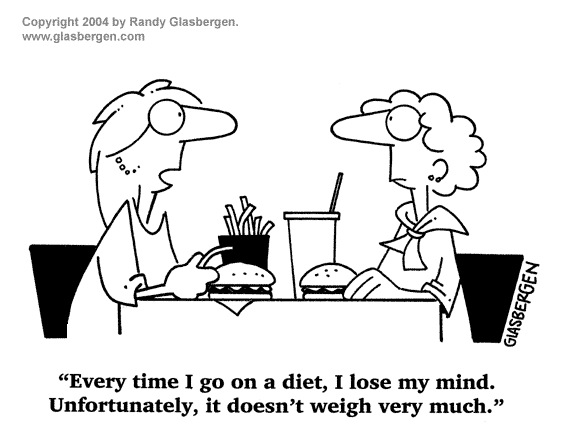 |
Here is easy 7-step plan for doing your own elimination diet.
1. Take stock. It’s hard to know where you're going unless you know where you are.
Before you begin an elimination diet, start at your head and go to your toes, and make a list of everything you notice in your body, however subtle or long-standing the symptom has been.
Some potential symptoms of food sensitivities:
a. skin issues
b. Digestive issues like gas, bloating, or intermittent constipation
c. Bad allergies
d. energy level
e. mood
f. brain fog
2. Eliminate the usual suspects for 23 days.
No gluten, dairy, eggs, soy, fast food, or alcohol for 23 days.
Antibodies, which are the proteins that your immune system makes when it reacts to foods, take around 21 to 23 days to turn over, so if you don’t quit things to which you're sensitive for at least that time, you won’t get the full effect of eliminating them.
3. Cr*#! What DO I eat?
The diet requires a little grocery shopping and taking a few extra minutes a day to prepare food. New habits take 21 days to form, so the yogis say, which is also why we’re doing a 23-day elimination diet! We want these new habits to die hard.
4. But seriously .... what do I eat?
- 30% “clean” protein, i.e. organic, hormone-free, grass-fed, happy, lean beef, chicken, and wild fish and shellfish
- 70% vegetables, legumes (think beans and lentils), nuts, seeds, seaweeds, and gluten-free grains like quinoa
5. What to eat & what to avoid
- DO eat fish. (But watch out for fish on the NRDC’s high mercury list like tuna and swordfish.)
- DO eat lots of fiber, fresh whole foods, and unprocessed meals you make yourself.
- DO eat lots of healthy fats found in olive oil, ghee, coconut oil, sunflower oil, flax oil, walnut oil, and avocados.
- Do NOT eat processed health bars if possible. They often have 15 grams (or more) of sugar. If you need them for an emergency snack, the kinds I like are Go Raw pumpkin bars and Kind’s “Nuts and Spices” variety, because they are very low in sugar.
- Do NOT carbo load on gluten-free breads, cereals and crackers. Totally cool to eat some of these, but in an ideal world, you’re not just replacing a lot of refined carbs with a lot of gluten free refined carbs.
Watch out for oats, they almost always have gluten!
6. How do I reintroduce foods the right way?
On day 24, pick one thing you eliminated—like gluten, OR dairy, OR eggs—but not more than one, and eat it. See how you feel over the next 48 hours. If you have no reaction after two days, eat that same food again, and for a second time, notice how you feel. From there, it’s up to you whether or not to re-incorporate that food into your diet on a regular basis.
Once you’ve made a call on the first food you reintroduce, pick another one and follow the same steps.
7. This all works best when you pay attention to you.
Throughout the diet and the reintroduction process, notice how you feel.
 |
SHARED FROM:
Dr. Robin Berzin, February 6, 2014
The Simple Elimination Diet That Could Change Your Life Forever
http://www.mindbodygreen.com/0-12540/the-simple-elimination-diet-that-could-change-your-life-forever.html

No comments:
Post a Comment